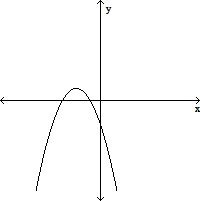A person's weight depends both on the daily rate of energy intake, say C calories per day, and the daily rate of energy consumption, typically between 12 and 20 calories per pound per day. Using an average value of 16 calories per pound per day, a person weighing w pounds uses 16w calories per day. If  , then weight remains constant, and weight gain or loss occurs according to whether C is greater or less than 16w.To determine how fast a change in weight will occur, a plausible assumption is that dw/dt is proportional to the net excess (or deficit)
, then weight remains constant, and weight gain or loss occurs according to whether C is greater or less than 16w.To determine how fast a change in weight will occur, a plausible assumption is that dw/dt is proportional to the net excess (or deficit)  in the number
in the number
of calories per day.Given that 3500 calories is equivalent to one pound, a differential equation to express this relationship is  . Solve this differential equation.
. Solve this differential equation.
A. w = C/16 - e-0.0046M e-0.0046t /16
B. w = C - e-0.0046M e-0.0046t
C. w = C/16 - e-0.0065M e-0.0065t /16
D. w = C - e-0.0065M e-0.0065t
Answer: A
You might also like to view...
Solve the problem.You have a choice of two accounts in which to invest your money for one year. Account A pays 4.6% simple interest rate and account B pays 3.5% interest compounded daily. Compute the effective annual yield of account B and determine which account has the better rate. (Assume that there are 360 days in a year.)
A. Account B B. Account A C. There is not enough information to decide. D. The rates are the same.
Write as a radical expression. Simplify if possible.(-49)3/2
A. ( )3 = -3.5
)3 = -3.5
B. ( 3 = 7
3 = 7
C. Not a real number
D. ( )3 = -7
)3 = -7
Solve the equation.4x-2 - 5x-1 + 1 = 0
A. 
B. 
C. {-1, -4}
D. {1, 4}
Determine whether or not the graph is a graph of a function of x.
A. Function B. Not a function